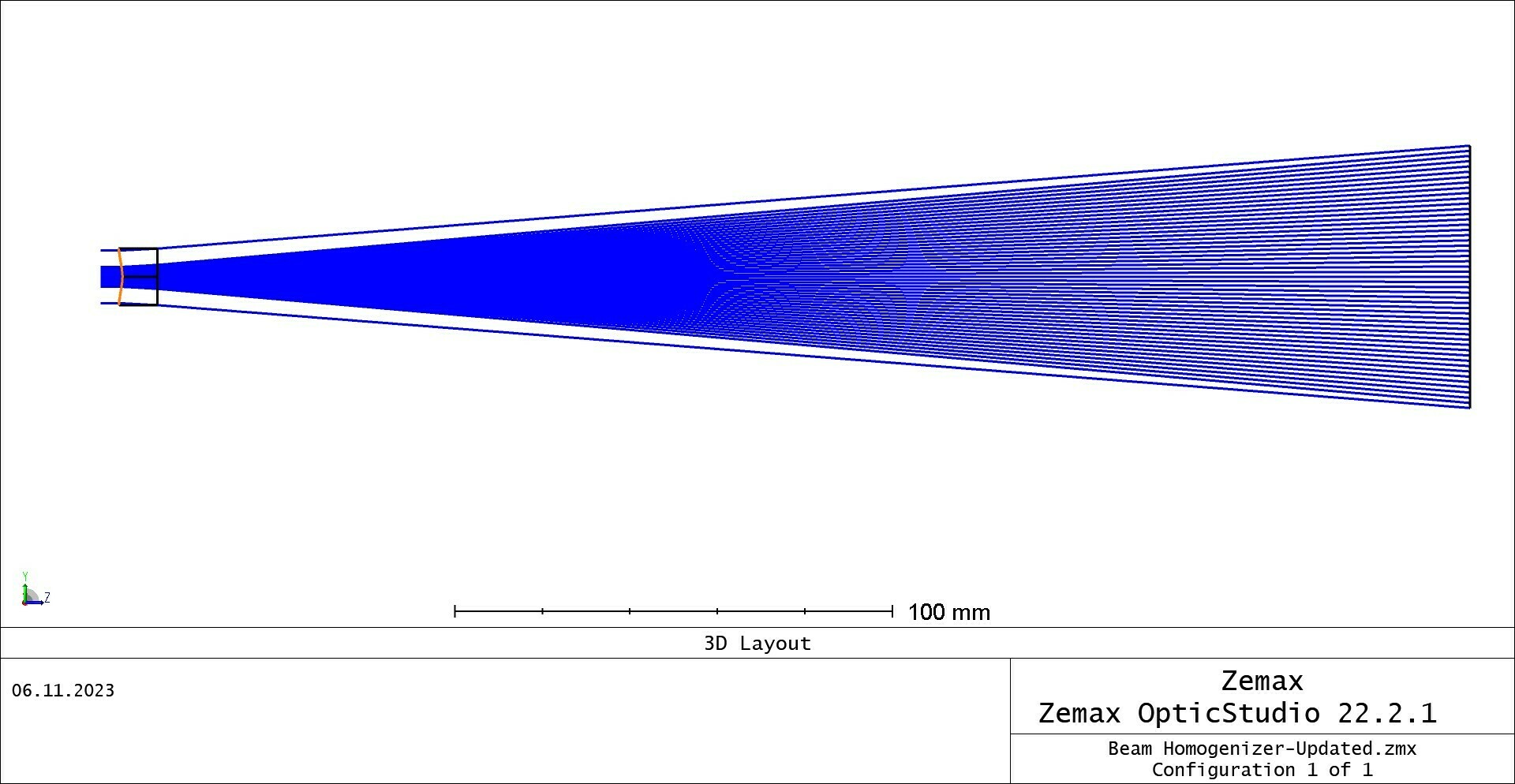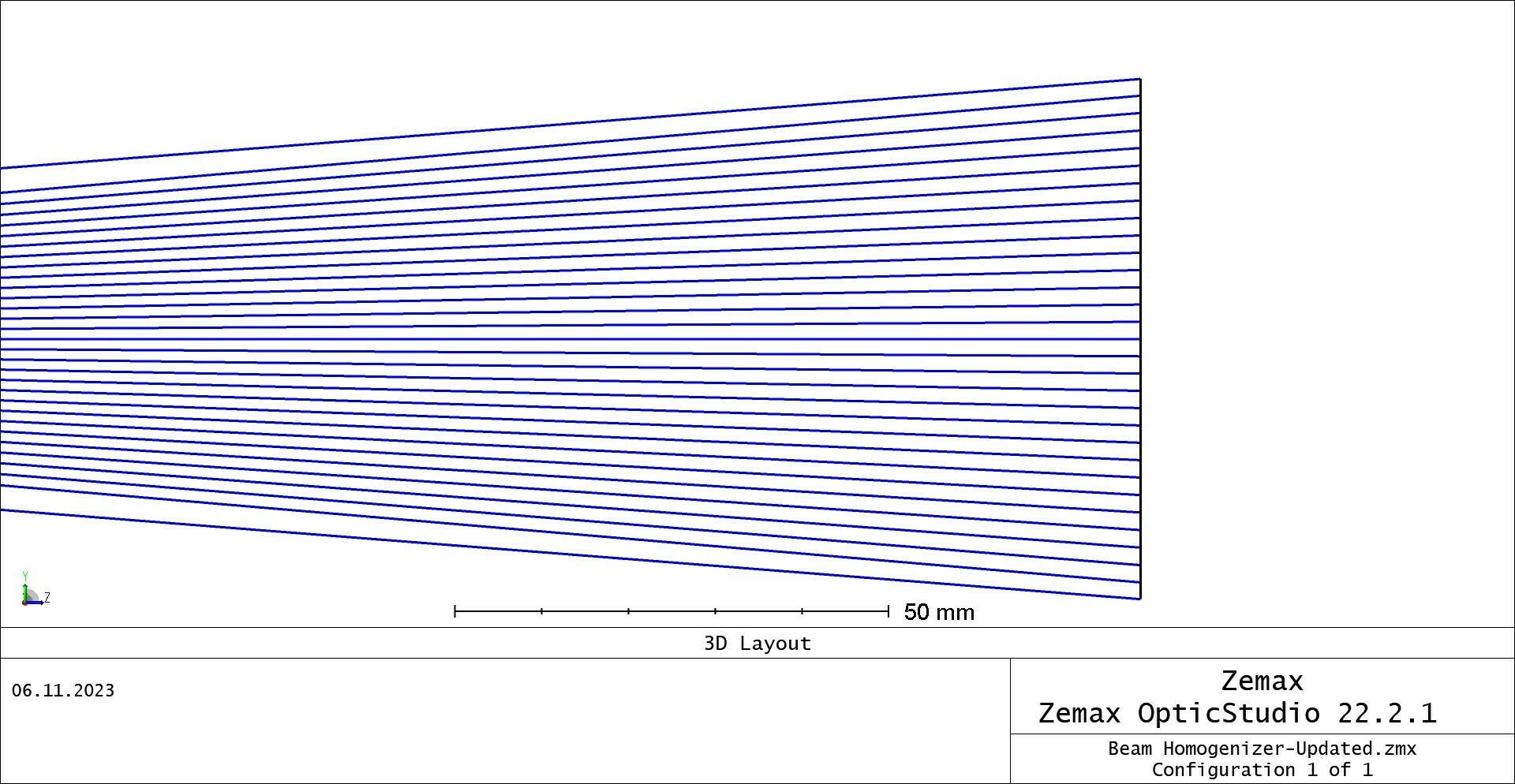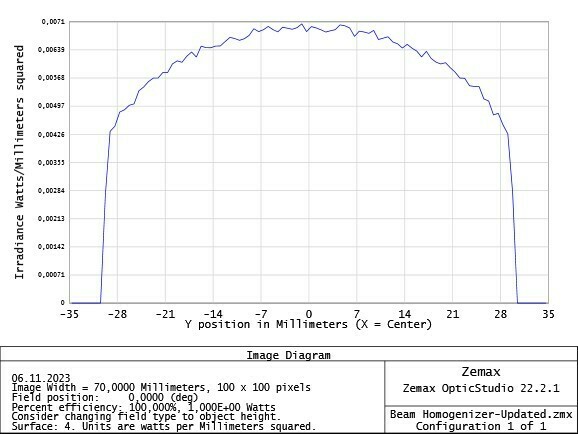Hi,
by following this article Top Hat and changing the lens surface to toroidal I optimized a homogeneous laser line along y-axis in sequential mode. At least I believe so, since the spacings between the rays (layout_detailed) are homogeneous.
While for the circular top hat profile described in the article Geometrical Image Analysis is a great tool to intuitively check the intensity profile, for me it doesn´t seems to work for the laser line. (beam_profile).
Is there a way to analyse the the intensity profile for the laser line in a similar way?
I do not really understand why the Geometrical Image Analysis do not work for the laser line. Probably because we still have a gaussian profile along the x-axis?






